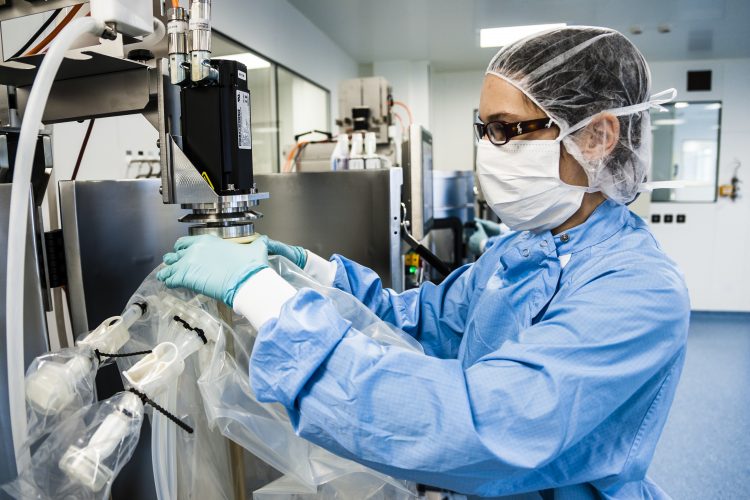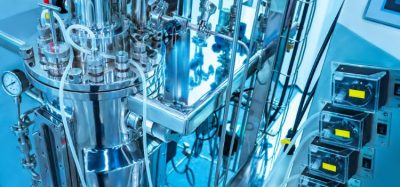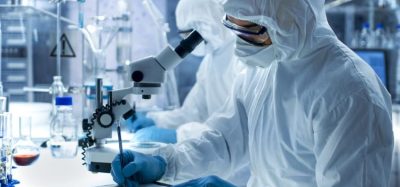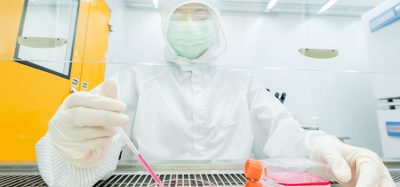Strategy for the adoption of single-use technology
Posted: 22 March 2018 | Tim Sandle | 1 comment
Recent technological advances are enabling manufacturers to move away from equipment that must be sterilised or consumables that are recycled or pose a risk with their transfer into cleanrooms, towards the adoption of disposable and single-use sterile items. This article considers the advantages of implementing single-use technology and outlines a framework that can be used as a strategy for implementation.


The manufacture of sterile products is complex as it entails the manufacture of a product of consistent efficacy and ensuring that the finished product is sterile. A number of factors contribute to sterility assurance, including high quality operating cleanrooms, barrier technology and well-trained staff. Another important area is the use of sterile equipment. Much of this equipment, from connectors to holding vessels, had until recently been rendered sterile through the application of heat. Most equipment was recyclable, going through cleaning and re-sterilisation processes.1
However, such processes are time-consuming, expensive, energy hungry, require a large footprint and are prone to occasional control breakdowns. Control breakdowns pose a risk in terms of product sterility; cross contamination (avoided with single-use systems, since disposables provide for closed systems); failure to achieve sterility such as a wet autoclave load for a stainless steel vessel; or contamination ingress, as with performing a vessel-to-vessel connection. In the past 10 years, there have been several advances in single-use, sterile disposable technologies, such as bag chambers, connectors, tubing, filling needle manifolds and filter capsules, either as individual entities or complete systems. These single-use systems have challenged the established cycle of re-using equipment (primarily stainless steel) and promise a new paradigm for pharmaceutical manufacturing.2
The paradigm is achieved through the adoption of single-use technologies to reduce concerns around time, costs and non-sterility by enabling pharmaceutical organisations to move away from equipment that must be sterilised or consumables that are recycled or pose a risk with their transfer into cleanrooms, towards the adoption of disposable and single-use sterile items.3 Single-use technologies include tubing, capsule filters, ion exchange membrane chromatography devices, mixers, bioreactors, product holding sterile bags in place of stainless steel vessels (sterile fluid containment bags), connection devices and sampling receptacles.4
Types of technologies
Many types of single-use disposable technologies are available for biologics manufacturers. Aseptic connectors, required for aseptic processing, are one example. Connectors are part of the process that connects a vessel to a filter for the transfer of product to a filling machine manifold, and single-use versions allow for a totally enclosed and automated process. Another example is disposable bag technologies – part of the transition away from fixed, stainless-steel equipment. As well as bags, disposable mixing systems are available, and these can be connected to capsule membrane filters and a hold bag (in a two- or three-dimensional design).
A further example is sterile biocontainer bags, which allow a sample for bioburden determination to be taken in a way that eliminates the possibility of external or operator contamination triggering a false positive result. The advantages of these bags have been discussed in an earlier European Pharmaceutical Review article.5
Most of these technologies are sterilised using gamma rays (electromagnetic irradiation). Ethylene oxide gas remains an alternative sterilisation process, though not one adopted by most single-use manufacturers. Gamma irradiation kills bacteria, where there is sufficient energy, at the molecular level by breaking down bacterial DNA and inhibiting bacterial division.
The advantages
There are three primary reasons for investing in single-use technologies.6 Firstly, to reduce processing time (which is linked to economic pressure to improve time-to-market) and operational costs. Time and cost savings are made by removing the need to clean and recycle equipment (such as stainless-steel processing vessels) through the use of sterilisation-in-place (SIP) and cleaning-in-place (CIP) processes, which additionally require extensive validation. While costs are lower, an environmental impact remains in terms of disposal.
A second reason is the reduction in manufacturing costs, because manufacturing systems are more reliable, flexible and cost effective. Flexibility appeals to smaller-scale manufacturers where manageable, smaller operations of niche products can be undertaken more easily with disposable technology. Flexibility also fits with the growing tendency for production on demand.7 Flexibility delivers faster set-up time and lower capital costs.
The third reason is improved sterility assurance. Investment in better sterility assurance, by improving controls during product manufacture and filling, can reduce batch rejection. Stronger processing controls partly address the concern that, if a product fails its final sterility test for batch release, nothing can be done to correct a sterility problem with the manufacturing of the batch.8
The advantages of single-use technology can be summarised as: eliminating the need for cleaning; removing requirements for in-house sterilisation (typically by autoclaving) for all components; reducing the use of cleaning chemicals; cutting storage requirements; lowering process downtime; and increasing process flexibility and reducing cross contamination risks.
Implementation strategy
Various factors must be considered when implementing single-use technologies, ranging from product efficacy to sterilisation methods. An implementation and validation approach is required to assess several key factors. Integration of this technology does not necessarily need to be all encompassing, and a mixed approach retaining some conventional technology may be appropriate – depending on product volume and the amount of flexibility required. So-called hybrid systems can optimise existing technology and reduce the cost of purchasing single-use supplies.
Key considerations for implementation include:
- Space, ergonomics and Quality-by-Design
- Validation
- Sterilisation
- Supplier assurance
- Qualification steps
- Scale-up.
It is necessary to consider ergonomic factors such as space requirements, both in terms of storage and for processing. Adoption of single-use technology also permits manufacturers to review and rethink the product process flow and make efficiency adjustments. Depending on the nature of operations, manufacturers can move some products to flexible, smaller footprint facilities; in other facilities, legacy products can be brought into the modern age, incorporating the principles of Quality by Design.
Such changes and technological updates also present an opportunity for more real-time monitoring, which fits with the regulatory drive towards process analytical technology (PAT). An example is bioprocessing devices fitted with disposable sensors like inline pH and temperature monitoring.
Validation concerns are central to the adoption strategy and several validation steps must be undertaken before such technology is adopted.9 These include assessing any leachables or extractables that might arise when the product comes into contact with the single-use technology. Extractables could lead to adulterated product or the inhibition of any microbial contamination (leading to a false negative result). This risk will vary between different products, the degree of contact time and where in the manufacturing stage the contact takes place.10 There must also be sufficient confidence about the reliability and consistency of the manufacture of the resins used for films, components and tubing.
The sterilisation method and whether it is likely to impart any deleterious effect upon the item is important. For example, some sterilisation processes (such as gamma radiation) can make some plastics more brittle.11 Another area of concern, as mentioned above, is with leachables and extractables where the risks can be triggered if the sterilisation process affects the plastic.12 A review of the extent to which the sterilisation method changes a polymer’s properties, such as tensile strength, colour, shape, or molecular weight, must be undertaken as part of the adoption process.
A further factor is technology availability (in that not all sizes or types required are available) and development costs if the technology is bespoke requiring manufacturers to work closely with technology providers. Before advancing too far with a particular supplier, they should be subject to financial checks, assurance obtained about supply continuity, and an audit undertaken of the manufacturing area. The supplier should also provide a qualification package.
Once the technology has completed each of the necessary qualification steps, stability studies may be required to assess the longer-term effect of the technology upon the processed product. Whether such studies are necessary will depend upon the type of technology and its maturity along with supporting data. At the end of the implementation process, the single-use technology requires a change control and may require licensing changes prior to use with commercial batches, depending upon the requirements of the applicable regulatory authority.
For small-scale processing and phase appropriate GMP an additional consideration is whether the technology will be used for the scaled-up commercial batch. This requires an assessment of cost-effectiveness and technological feasibility. Ideally, the development will not commence until this question has been satisfactorily answered.
Summary
This article has examined sterile single-use disposable technologies and the advantages they can bring to pharmaceutical manufacturers in terms of automation, compactness, and reliability. Although some types of technologies have been used as exemplars, the aim was not to present a catalogue of different technologies but rather to present a framework that can be used as part of the process of developing a strategy for the implementation of the technology. Focal points for the strategy include scale-up, product compatibility, ergonomics, costs, sterilisation methods and product licensing impact.
If the strategy is conducted holistically then many pharmaceutical manufacturers can pragmatically combine such technical innovations to reduce the costs of products and to strengthen sterility assurance.
BIOGRAPHY
Dr Tim Sandle’s primary role is Head of Microbiology at Bio Products Laboratory, a sterile products manufacturer. In addition, he is a tutor with the School of Pharmacy and Pharmaceutical Sciences, University of Manchester, for the university’s pharmaceutical microbiology MSc course, and a longstanding committee member of the pharmaceutical microbiology society Pharmig.
References
- Sandle T. Single-use technology for biopharma. Cleanroom Technology. 2013;21 (12):15-19.
- Blackwell JV. Single-use technology – where has it been, where it is now, and where is it going? Pharm Processing. 2010;10(4):1-3.
- Langer ES. Trends in Single-Use Bioproduction. Bioprocess International. March 2009:4-6.
- Rao G, Moreira A, Brorson K. Disposable Bioprocessing: The Future Has Arrived. Biotechnol Bioeng. 2009;102:348-356.
- Sandle T. Improving microbiological assurance for bioburden tests. European Pharmaceutical Review. 2016;21(3):41-44.
- Sandle T. Trends in healthcare cleanroom practice: single-use sterile disposable technology. Clean Air and Containment Review. 2013; Issue 16: pp18-20.
- Haxthausen N. Biopharmaceuticals on demand: free from traditional constraints, China reinvents biomanufacturing. Bioprocess Int. 2012;10(11):46–48.
- Sandle T. Current Developments with Disposable Technology and Single-Use Systems for Aseptic Processing. BioPharma Asia. 2015;4(6):5-11.
- Martin L, Bartow M, Schaidle B, Tuttle G, Sanstrom C. Disposables in Biopharmaceutical Manufacturing. In Langer, E.S. (Ed.) Advances in Large-Scale Biopharmaceutical Manufacturing and Scale-Up Production. BioPlan Press. Rockville, USA: 737-766.
- Jenke D. Evaluation of the chemical compatibility of plastic contact materials and pharmaceutical products; safety considerations related to extractables and leachables. J Pharm Sci. 2007;96:2566-2581.
- Sandle T, Saghee MR. Application of Sterilization by Gamma Radiation for Single-Use Disposable Technologies in the Biopharmaceutical Sector. Pharmaceutical Technology, Supplement: Bioprocessing and Pharmaceutical Manufacturing. May 2012: S20-S27.
- Sandle T, Saghee MR. Some considerations for the implementation of disposable technology and single-use systems in biopharmaceuticals. Journal of Commercial Biotechnology. 2011;17(4):319–329.








The debate is maybe not so novel as it may sound. Single use process equipment has been making process over the last decades.
Often overseen are the effects on the environment. Eg. single use parts arrive in ternary packaging materials. And it is manufactured in remote places from materials not from rectified plastics.
I would like to also point to other changes that also shape the landscape. Eg. as of April 2017 purified water can be achieved and be approved for parenterals without heat sterilization. Who would have thought FDA and EMA would achieve this regulatory shift?